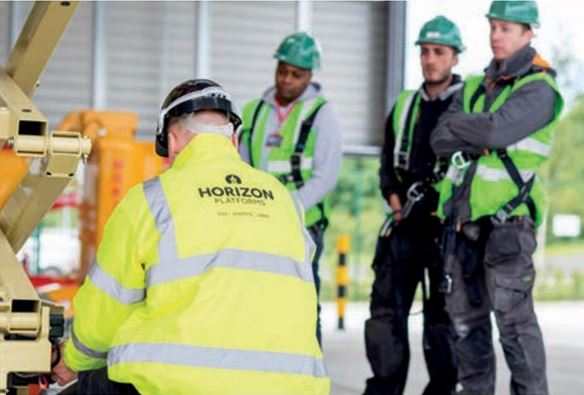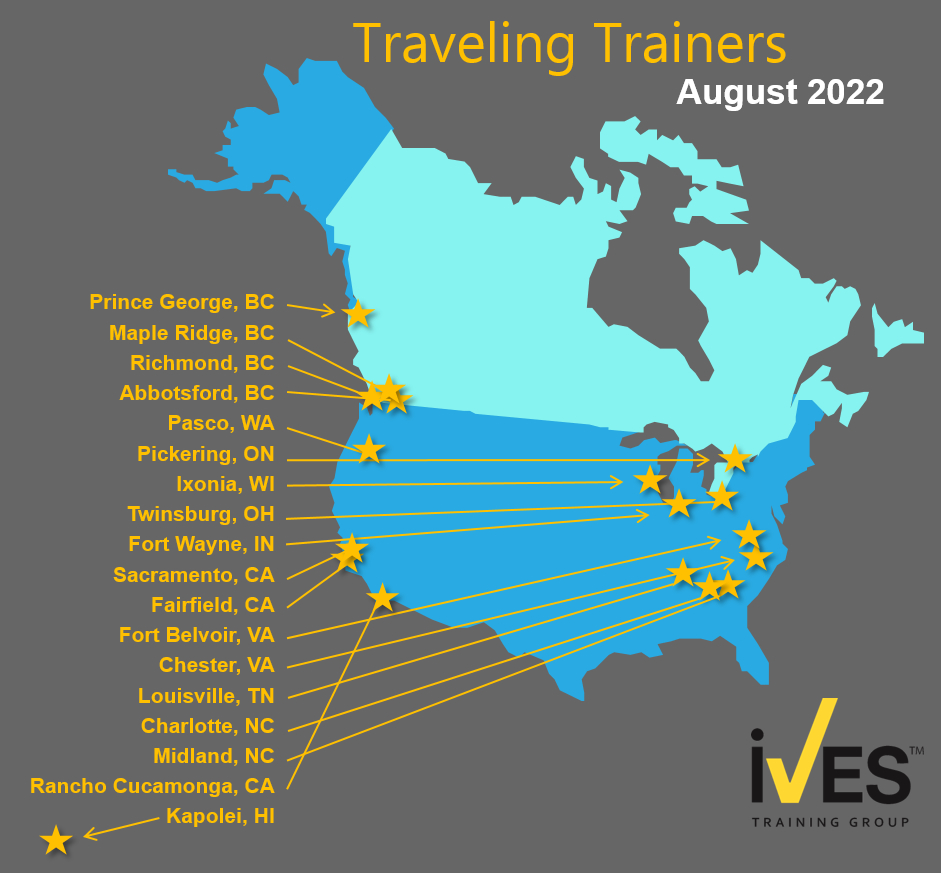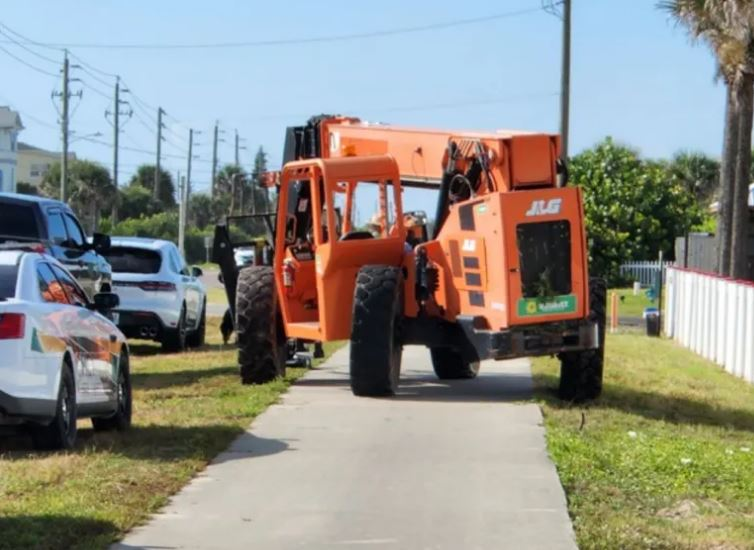
Can a one-hour online course really comply with standardized MEWP training requirements?
I
recently received a call that questioned the validity of a MEWP online
training course that claimed to be 100-percent OSHA-compliant while also
stating it could get your employees boom and scissor lift certified in
about one hour.
This online training provider also
stated that new ANSI standards went into effect in 2020 and this is the
first time in over 10 years that any changes have been made to the
rules governing safety for OSHA-compliant use of aerial lift machines.
This
online provider further stated that this means the current OSHA
standards will be outdated, and owners, operators or supervisors must
comply with ANSI standards or risk being cited.
My response to
these types of questions is to revert to what the MEWP industry
standards say, but I also must correct a few claims by this online
provider’s statements.
While OSHA’s regulations
are mandatory, there has been no changes or updates to OSHA aerial lift
regulations. Only the ANSI/SAIA A92 standards require updated training
and certification to provide better and safer operation and maintenance
of mobile aerial work platforms (MEWPs.) The ANSI/SAIA MEWP standards
are not OSHA regulations and are not an OSHA requirement unless adopted
by reference into an OSHA regulation.
That has
only occurred in 1970 when OSHA adopted by reference ANSI A92.2-1969. As
the OSHA regulations have not adopted by reference any of the revisions
to A92.2 or other ANSI/SAIA A92 standards, OSHA cannot cite
non-compliance with new ANSI/SAIA standards.
OSHA
regulations are the minimum legal requirements for MEWP safety. ANSI
standards provide more current and thorough guidance for the design,
safe-use and training of MEWPs. When considering the status of MEWP
training in 2022, there are two opposing responses that are both true –
nothing has changed, and everything has changed.
The
foundation for both is the level of buy-in to the ANSI/SAIA A92.22 MEWP
safe use and A92.24 training standards. For many, nothing has changed
as they acknowledge that OSHA regulations are law and ANSI standards are
voluntary and not required. It is fact that unless an ANSI standard is
adopted by reference into the OSHA regulations it is not an OSHA
requirement or enforceable.
Consider the general duty clause
However,
OSHA can determine if the employer in question is complying with the
general duty clause, which requires the employer to take into account
the best course of action in applying safety practices to eliminate
hazards. If ANSI standards are not acknowledged by an employer whose
industry needs that guidance, then OSHA can cite them for not complying
with the general duty clause.
In a 1992 OSHA
letter of interpretation, OSHA stated: “There are two OSHA standards
addressing the qualifications of lift operators. Section 1926.21(b)(2)
requires employers to instruct each employee in the recognition and
avoidance of unsafe conditions and the regulations applicable to his
work environment. Section 1926.556(b)(2)(ii) requires that ‘only
authorized persons shall operate an aerial lift’.
The
term ‘authorized person’ is defined at 1926.32(d) as ‘a person approved
or assigned by the employer to perform a specific type of duty or
duties or to be at a specific location or locations at the jobsite’.”
There
are no specific OSHA regulations that require aerial lift operators to
be either certified or qualified. In the situation where operator
capabilities are the issue, OSHA would first determine if the operator
was trained and, if no training was provided, issue a citation for
violating 1926.21(b)(2). If training was provided, OSHA would need to
use the general duty requirements of paragraph 5(a)(1) of the OSH Act to
address any related violations.
In so doing, OSHA
would use the ANSI requirements to help establish what the industry
practice is regarding operator qualifications.
So,
while many can choose to ignore the ANSI/SAIA A92 standards as
voluntary, this is an example of why they remain a foundation of what
should be followed.
I could add a litany on how
they are used in lawsuit litigation, but the A92 standards are what the
MEWP industry follows and are referenced by every MEWP manufacturer in
their design and operator’s manual.
Penalties are a deterrent for failing to comply with the rules
Since
ANSI doesn’t have the same kind of authority as OSHA, there are no ANSI
compliance officers and too often the standards are often used like
manufacturer operator manuals – read rarely and followed even less
frequently.
Despite being ignored by many, the
standards provide the best guidance for safe MEWP operation. 100% of
MEWP manufacturers adhere to the standards as they apply to the design
and manufacturing of the equipment.
Doesn’t it
seem odd that while you want manufacturers to comply, that same
discipline is absent when it comes to user compliance with safe-use and
training standards?
So, to go back to my opening
point regarding the validity of the online MEWP training, I refer to the
ANSI/SAIA A92.24-2018 standard for the Training Requirements for Use,
Operation, Inspection, Testing, and Maintenance of Mobile Elevating Work
Platforms (MEWPs).
This standard provides methods
and guidelines to prepare MEWP training materials, defines
administrative criteria, and the elements required for delivery of
proper training and familiarization.
One of the
purposes of the training standard is to achieve thorough and consistent
training. If all providing the training follow the same requirements, it
is hard to explain how the same training can be delivered in different
amounts of time.
When you review what must be
included in standardized MEWP training, you cannot escape the reality
that it takes time to complete all the requirements – much more than one
hour!
Specific to MEWP operator training, it is
required for different MEWP classifications, such as 1a push around
vertical lifts, 1b boom lift not drive-able when elevated, 3a mobile,
drive-able vertical lifts and 3b boom lift, drive-able when elevated.
Only
personnel who have received training in compliance with this Standard
(ANSI/SAIA A92.24) regarding the inspection, application, and operation
of MEWPs (including recognition and avoiding of hazards associated with
their operation) shall be authorized to operate a MEWP.
The
training includes two components, classroom/online theory training and
hands-on practical training and evaluation. Both theory and practical
training content is defined in the standard. Starting with theory
content, it must include MEWP safe use as required in the A92.22 safe
use standard.
That is an entire standard that addresses the application, inspection, maintenance, and safe operation of MEWPs.
The
training standard includes 25 topics in the required content for MEWP
operator theory classroom/online training. When comparing MEWP online
theory courses from MEWP manufacturers and industry programs that take
at least 2.5 hours to complete, it is hard to understand how this same
information can be condensed into an hour, including testing.
Within
the 25 required content topics for theory training, some are simple and
direct, for example validating that the annual inspection is current or
knowing what the applicable standards and regulations that apply to
MEWPs are. But there are many more complex topics to include, such as
how to perform a pre‐start inspection, factors affecting stability, or
recognition and avoidance of hazards associated with operation,
including weather and ground conditions, knowing and understanding
workplace inspections and the requirement for them to be performed prior
to each use.
When you consider all content to be
covered, the detail required to present them in a manner to be
understood, incorporating the associated information from the safe use
standard for the topics, ensuring the trainee both understands them and
can apply them in the practical training through direct application
during MEWP operation, it is reasonable to foresee multiple hours
required to provide the information that is essential for trainees to
become safe and effective MEWP operators.
After completion of the theory training course a test must be completed.
Each trainee shall show proficiency in both theory (classroom/ online) and practical (hands‐on).
Results of the theory (classroom/online) and practical (hands-on) evaluations shall be documented.
The
training standard provides examples of the knowledge and practical
evaluations necessary for trainees to demonstrate their knowledge and
understanding of the topics. While the examples are non-mandatory, they
provide a sample of what all testing should include.
MEWP
operator trainees must successfully complete the theory training before
they are allowed to participate in the hands-on operational component
of operator training. They must understand the basic requirements to
conduct MEWP inspections, identification and avoidance of risk in the
work environment, and safe operational procedures before operating the
MEWP under the supervision of a qualified trainer.
The training standard also defines required content for hands-on practical training.
The
trainee must now demonstrate proficiency, incorporating the knowledge
learned in the theory training course, regarding MEWP familiarization of
the model MEWP to be operated, identification and function of the major
MEWP components, carrying out daily checks and inspections, operation
and function of all controls (completing course tasks set by the
trainer), and ending with parking and securing the MEWP on completion.
This must occur for each MEWP category required to operate
(1a/1b/2a/2b/3a/3b).
When considering completing a
standardized hands-on practical training, all must complete a review of
site risk assessment, familiarization and pre-start inspection for each
category of MEWP included in the training, and the individual
proficiency operation evaluation of each trainee that includes both
theory and operational proficiency.
Standardized
MEWP operator training has the same requirements regardless of if one is
a novice or experienced equipment operator. The content and testing of
each trainee is the same.
While some models of
MEWP may be more complex and require additional time, the reality is
training courses tend to use the most common MEWPs in the marketplace.
With
the introduction of the ANSI/SAIA A92.24 MEWP training standard, there
should be limited variances in the training offered. All training should
be following the same requirements, incorporating the same content for
both classroom/online theory and hands-on practical training, being
administered under the same requirements, and ultimately providing the
same thorough and consistent training regardless of who is delivering it
or where the training being provided.
As with all
things, if you attempt to take short cuts, your final results will not
be as good. Training is the foundation to becoming a qualified person
for a task – ensure you and your employees all have this strong
foundation to build upon.


 Question:
Question:
 "I personally liked everything about their program. I learned a lot
of things I did not know." Andre, Premium Forklift Train the Trainer
Program.
"I personally liked everything about their program. I learned a lot
of things I did not know." Andre, Premium Forklift Train the Trainer
Program.